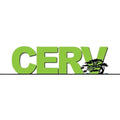A circle of about 10 people are gathered in the Santa Lucia Preserve in Carmel Valley on Sunday, Nov. 7. It’s a diverse set of characters: researchers, scientists, academics, conservationists, and they are sharing their expertise and posing questions about the land, its ecosystem and how to protect biodiversity. They talk about how modern environmental policy has perverted indigenous wisdom and how the future needs to look more like the past in terms of land management. The conversation unfolds against the backdrop of a crackling fire – a 7-acre blaze that some in the group helped set.
By the end of the day, the aim is to burn more than 47 acres of green hilltops along the 20,000-acre preserve. They hope the char will provide evidence of what most of them already know: Fires are a necessary part of this ecosystem and, when carefully managed, can help facilitate a healthy and resilient biodiversity of native species – crucial to the long term preservation of the land.
Hundreds of years ago, these hilltops would have been a palette of pinks, purples and yellows, a native coastal prairie covered in wildflowers. Today, the recent rain has shifted the prevailing hue from brown to green, but the hills are dominated by thick coyote brush and a mix of native and nonnative grasses. Coyote brush, though a native species, has been left unchecked for generations and has conquered the landscape, leading to a problematic lack of diversity.
As the hill face burns, Rodrigo Corona, an ecologist with the Preserve, says the fire will give the native ecosystem room to breathe.
“We’re changing who dominates the system,” Corona says. “Everything is there already. If we were to walk this area after the burn, we would see that native grasses are already there. We’re just giving it space to grow.”
This prescribed burn only occurs with the help of an army of firelighters and is directed by a person officially known as a “burn boss.” A specific 7-acre portion of the fire is occurring under the close watch of researchers, led by Devii Rao of the UC Cooperative Extension and Katie Wilkin, associate professor of fire ecology at San Jose State University.
Rao, who helped get the grant for the burn, says they want to understand the best method for getting rid of coyote brush and keeping it in check. Before igniting the plot, a crew employed a handful of “pre-treatments” to the brush: chopping it down with chainsaws, chewing it up with a masticator and crushing it under the wheels of a tractor. After the burn, they will study which pre-treatment was most effective.
“Grasslands are disturbance-dependent. They need disturbances, such as grazing and burns,” Rao says. “If you’ve identified that grassland is important and you want to be managing grasslands, you need to figure out which kind of disturbance you are going to use to maintain it.”
The method of controlled burns is ancient wisdom, says Scott Davis, a former firefighter with the U.S. Forest Service. He says the “friendly burn” being employed at the preserve is akin to “giving it a haircut.” However, modern policies and red tape have made it more difficult to perform controlled burns.
“Some tribal groups I’ve spoken with said they were putting fire under oak trees twice a year.” Davis says. “In my opinion, we’re not putting enough fire on the landscape.”



